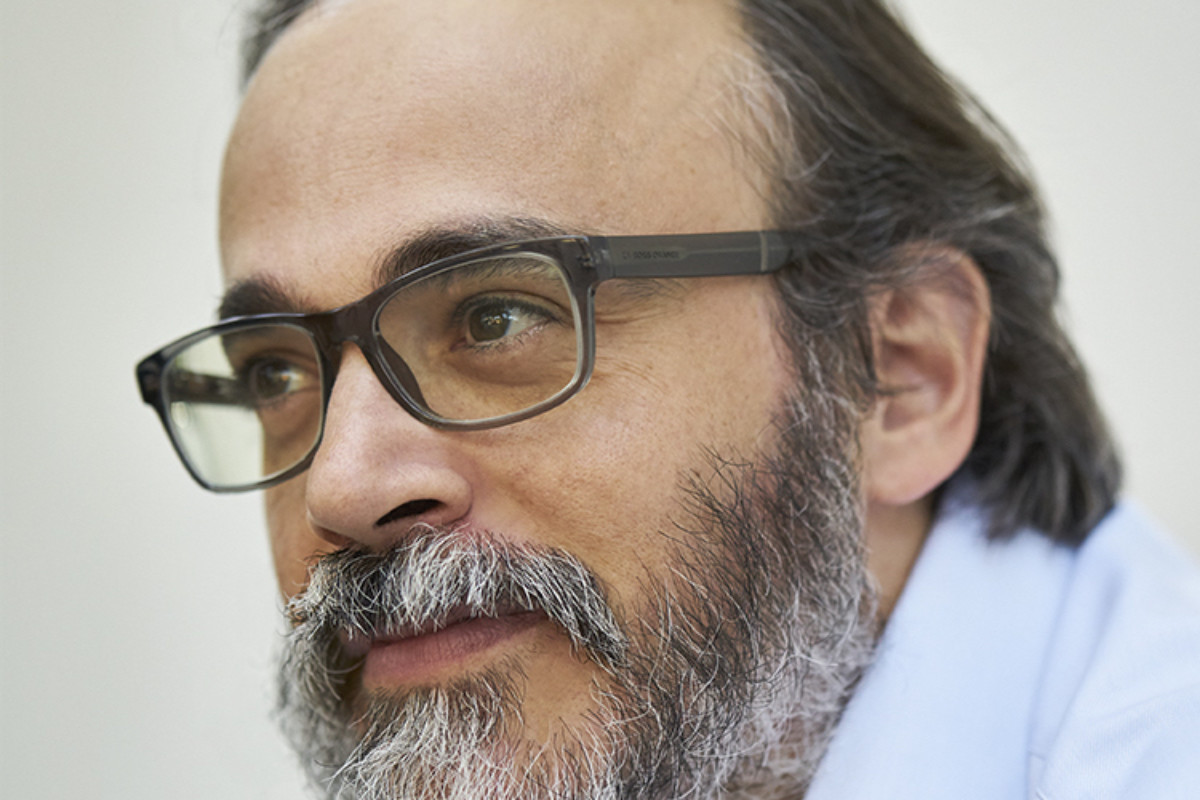This concert was inspired by the huge scale of the Albert Hall. The three works all evoke spacious vistas, through their expansive textures, echo effects and horn calls. Mozart, Haas and Strauss made for a diverse programme though, the three works all written in different centuries, and each on a grander scale than the last.
The Mozart Notturno in D Major is one of his many serenades written for the Salzburg aristocracy. The twist is that the ensemble is divided into four groups, each a string orchestra with a pair of horns added, and the four groups are set at a distance, the musical ideas echoing from one to the next. For this well-choreographed performance, Ilan Volkov conducted the first group on the stage, the second was positioned at the back of the Arena, the third in a rear box, and the fourth high up in the Gallery.
Musically, the work is straightforward, with simple tunes cascaded around the groups, the echo effect achieved through brief overlaps from one to the next. Having the ensembles at a progressively greater distance gave the impression of the music receding into the distance, especially with the horns of the fourth group swallowed up in the reverberance of the Gallery. Volkov (pictured below by James Mollison) knows that Mozart is labouring the joke, so he played it straight to highlight the effect. That was balanced by brisk and lively playing from the strings and horns of the BBC Scottish Symphony Orchestra, all maintaining high dynamics for audibility and balance. At three protracted movements, this was long for a novelty opener, but it was never less than fun.  Georg Friedrich Haas continued the horn theme with his Concerto Grosso No. 1, for four alphorns and orchestra. Haas’s style continues on from Ligeti’s orchestral scores of the 1960s, all webs of sound gradually evolving through extended performing techniques and long string glissandos. But his textures are more open than Ligeti’s, and the direction of his musical progression is always clear. Alphorns are a curious addition to this mix. Haas himself is from the Western region of the Austrian Alps, so there is a personal connection. Yet there is little painting here, even if Alpine panoramas are sometimes evoked by the breadth and scale of the music – an unbroken half-hour span.
Georg Friedrich Haas continued the horn theme with his Concerto Grosso No. 1, for four alphorns and orchestra. Haas’s style continues on from Ligeti’s orchestral scores of the 1960s, all webs of sound gradually evolving through extended performing techniques and long string glissandos. But his textures are more open than Ligeti’s, and the direction of his musical progression is always clear. Alphorns are a curious addition to this mix. Haas himself is from the Western region of the Austrian Alps, so there is a personal connection. Yet there is little painting here, even if Alpine panoramas are sometimes evoked by the breadth and scale of the music – an unbroken half-hour span.
The work begins with long drones from the alphorns, played here by the original soloists, the Hornroh Modern Alphorn Quartet, against repeated-note textures in the strings. Gradually, the orchestral focus moves back into the woodwind and brass, then percussion, while the alphorns explore their higher partials, the untempered harmonic series clashing against the orchestral sonorities a recurring feature. This is music on a grand scale, and Haas makes excellent use of both his large orchestra and his eccentric solo instruments. But, while his musical processes are always clear, his expressive aims remain opaque: Given the highly associative nature of the instruments, the whole work retains an impenetrable aura of abstraction.
Not so with the Alpine Symphony. Strauss’s last and largest tone poem has an explicit narrative set out in the score – sunrise, an alpine ascent, a storm on the way down, and then sunset. Ilan Volkov took a suitably narrative approach, eliciting different textures and moods for each of the sections, but weaving them together seamlessly. He pushed the tempos in the first half, giving the ascent a more symphonic profile, and then held back for the mystical sections towards the end. The much-enlarged BBC Scottish Symphony Orchestra sometimes struggled with the faster tempos early on, but from the climax at the summit onwards, the playing was excellent. The final few minutes were beautifully paced, with fine contributions from the solo horn, Alberto Menédez Escribano, organist Richard Pearce, and the trombone section, all bronze-hued, warm sonorities over a rich bed of strings as the sun slowly set behind the mountain. Glorious.













Add comment